Mr. Limpy Size Guide
Mr. Limpy packers are the standard beginner packer for anybody looking to get their first packer - but finding information on the sizes, beyond a vague description of length, is nigh impossible. This is why we've put together a comprehensive set of photographs on the three available sizes of Mr. Limpy in action, as shown in Men's, Women's, and Unisex trousers. This guide aims to be as realistic and truthful to the experience as possible.
Mr. Limpy packers are accurate recreations of genitalia, meant to fill out the trousers in a realistic manner.
You will see accurate depictions of genitalia on this page.
Jump To...
Terms used in this Guide
Men's Jeans
Women's Jeans
Unisex Trousers
Addendum
Some Terms Used in This Guide...
Front-Packing is the practice of tucking the head of the packer so that it is flush with the scrotum.
Side-Dressing is a style of packing where the length of the packer is dressed left or right, so that it is flush with the hip bone; usually utilised in tailoring for dress trousers.
This guide will show front-packing and side-dressing of all three sizes of the Mr. Limpy packer, in Men's Trousers, Women's Trousers, and Unisex Trousers. We use men's boxer briefs to hold these in place. Our model is in his mid-20's.
Front-Packing
Front-packing is a method of packing where the head and length of the packer is tucked flush with the scrotum. This creates a sizeable yet neutral-looking filled out shape in the trousers. For a more natural look, let the length of the packer lie against the skin, still facing downwards.

Side-Packing
Side-packing, or Side-dressing, is where the packer is placed flush with the hip bone; depending on your trousers and the size of your packer, this can either create a neutral filled-out shape, or it can appear akin to an erection.


Back to top
Men's Jeans
Front Packing


Large, Medium, Small. This appears more-or-less natural in the Medium to Small sizes.
Side Packing

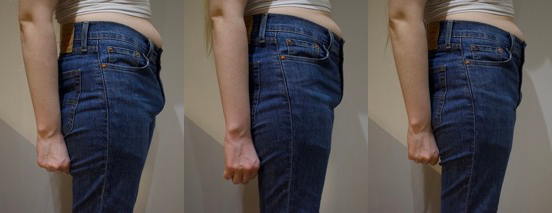
Large, Medium, Small. In the largest sizes, this appears as an erection, and appears far larger than what is natural. This is a boon for some, and a burden for others.
Men's Jeans Consensus
Men's Jeans are typically tight-fitting around the pelvic area, built to shape and enhance the crotch. This exemplifies and enhances the appearance of the packer.
Back to top
Women's Jeans
Front Packing


Large, Medium, Small. This method of packing looks neutral in any size in women's jeans.
Side Packing
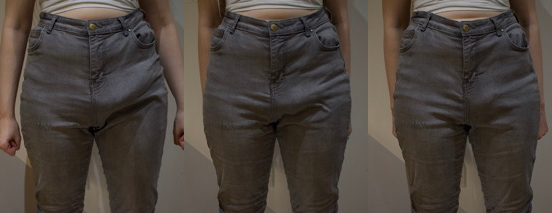
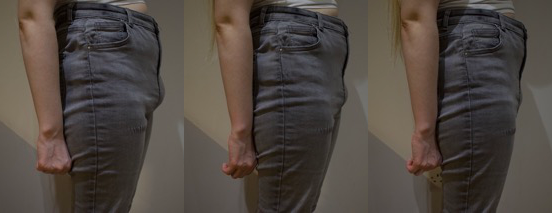
Large, Medium, Small. I cannot recommend side-loading in women's jeans unless you are in a private residency or an adult party, as it looks entirely like an erection, in any size.
Women's Jeans Consensus
Women's Jeans are typically tight-fitting and snug to the crotch area to create a form-fitting look which exemplifies the buttocks; this hinders the effectiveness of the packer, and presses it into awkward angles. We also find that these are uncomfortable, as there is not any room for the packer; it presses against the skin in an uncomfortable fashion. If you have no other jeans, we recommend the smallest size, until you have access to Men's or Unisex jeans.
Back to top
Unisex Trousers
Front Packing

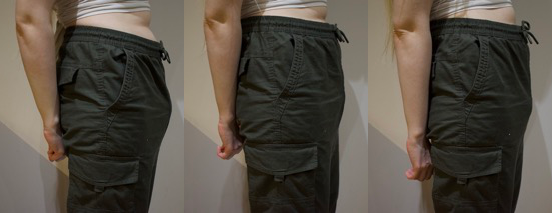
Large, Medium, Small. This position in these trousers is rather discrete and natural-looking.
Side Packing
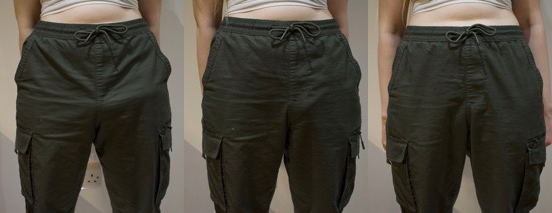
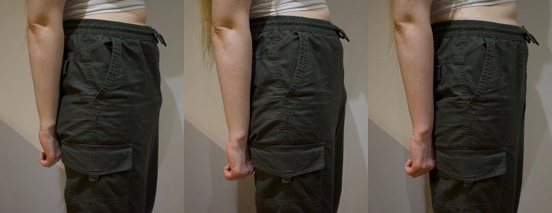
Large, Medium, Small. This appears nigh invisible in all but the largest size.
Unisex Trousers Consensus
Unisex Trousers are typically baggy, and don't much show your packer; if you wish to appear more androgynous or discrete when wearing your packer, you will find that unisex jeans will not do much to feature your packer.
Back to top
Addendum
Which size you choose is up to you; we hope that this visual guide has helped to illustrate the difference in sizes between each packer. Usually, within the transgender community, you'll hear that the largest size is 'very far too large' - and nothing else. It is difficult to size these things over the internet, especially when merely noting the width (and sometimes girth) does very little to illustrate the size of a packer.

Even seeing the different sizes side-by-side does little to explain what they will look like in use.
We hope that this guide has been useful in helping you to discern between sizes of packers; far too often does a transmasc purchase a size which is not right for them, and they become dissuaded, and disillusioned with packing. Don't give up. You'll find your perfect packer.
Back to top